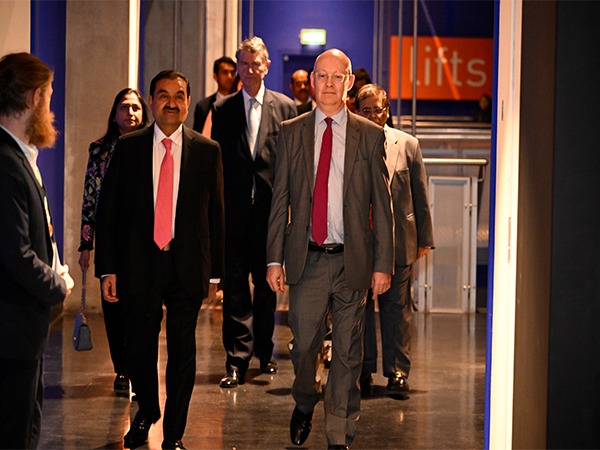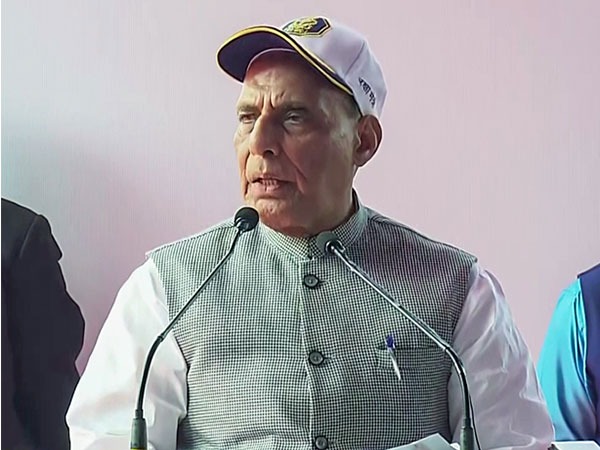
London [United Kingdom], March 26 (ANI): London’s Science Museum will on Tuesday open ‘Energy Revolution: The Adani Green Energy Gallery’ a major new free gallery, which explores how renewable energy can help tackle climate change. Through striking displays of contemporary and historic objects from the UK and abroad, interactive digital exhibits, and specially commissioned models, the gallery shows how the past, present and future are shaped by human imagination and innovation and explores how we all have a role to play in deciding our energy future.

Energy Revolution: The Adani Green Energy Gallery at the Science museum in London examines this century’s defining challenge through the lens of imagination across three sections.
In the ‘Future Planet’ section, visitors can explore how scientists use complex computer-based models to understand our planet, and what these tell us about the range of climate futures that might lie ahead.
In the ‘Future Energy’ section, technologies – and the people behind them – that are reimagining how energy is supplied and used are highlighted alongside historic artefacts which provide a longer view of the transition away from fossil fuels.
‘Our Future’ section looks to a new world that is being dreamt up, with children’s creative ideas of how the world will meet its future energy needs displayed with expert responses to them.
The gallery’s title funder is Adani Green Energy. Adani Green Energy Limited (AGEL) is India’s largest and one of the leading renewable energy companies in the world, enabling the clean energy transition.
Sagar Adani, Executive Director, AGEL, said, “The Science Museum has put together the world’s best curated gallery on energy transition. As one of the world’s largest renewable energy companies, we are committed to making progress towards net zero – and there is no greater resource in the fight against climate change than education. Through the sponsorship of the gallery, we aim to inspire young minds, scientists, and innovators to imagine a future powered by clean energy and build a carbon-free world. It is an initiative to stimulate their interest, curiosity, and awareness, and encourage their active participation in creating clean technologies. The gallery brings together the global community to enable the shift towards energy efficiency, clean energy adoption and carbon emissions reduction.”
The Science Museum feels that the gallery offers enough to ignite curiosity and provoke conversations. The Science Museum is part of the Science Museum Group, the world’s leading group of science museums that share a world-class collection providing an enduring record of scientific, technological, and medical achievements from across the globe.
‘In a week when we are celebrating a record 2.25 million visits by UK residents to the museum, including a million children, this stunning gallery offers even more to ignite curiosity among those who will visit in the year ahead – provoking important conversations about the urgent need for the world to generate and use energy more sustainably. Our curators have created an inspirational experience, supported by hundreds of people from artists to those involved in acquiring, conserving, and transporting vast objects safely, and, of course, vital funding from our generous sponsor Adani Green Energy,” Sir Ian Blatchford, Director and Chief Executive of the Science Museum Group, said.
At the centre of the gallery is Only Breath, a moving sculpture that signifies the power of nature to inspire technological change. Radiating outward from the centre are plinths which display vital low-carbon renewable energy technologies for the transition, from nuclear, hydrogen and solar to wind and tidal power, alongside remarkable historic innovations that remind us how major change is possible and that many of the technologies needed to make the low-carbon energy transition already exist. Objects in this section include a 7m long tidal turbine blade made by Scottish renewable energy company Orbital Marine Power and the first electric taxi, the Bersey cab, hailed by Londoners in 1897.
The challenges of electrification, energy storage, and supply and demand are also explored, with visitors invited to play interactive games and use models that show how energy can be generated and distributed. Possible routes to low-carbon transport are featured, as well the decarbonisation of our buildings and construction industries, and visitors can learn about climate modelling and see instruments used to measure climate.
Energy Revolution was designed by award-winning architects, Unknown Works. A key element of sustainable design was the reuse of redundant shelves from the Science Museum’s former object store. The gallery’s carbon footprint has been monitored, and recyclable aluminium was used where possible. (ANI)
















